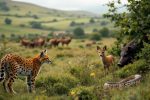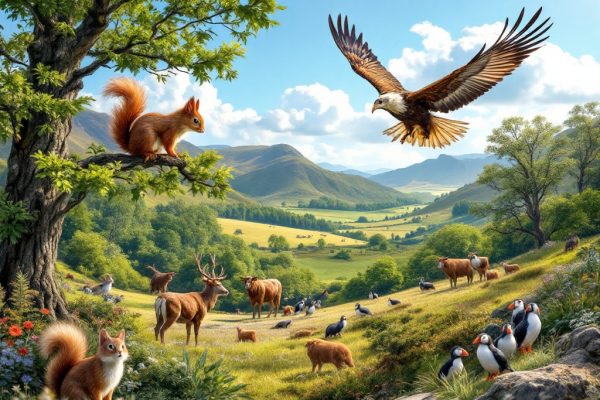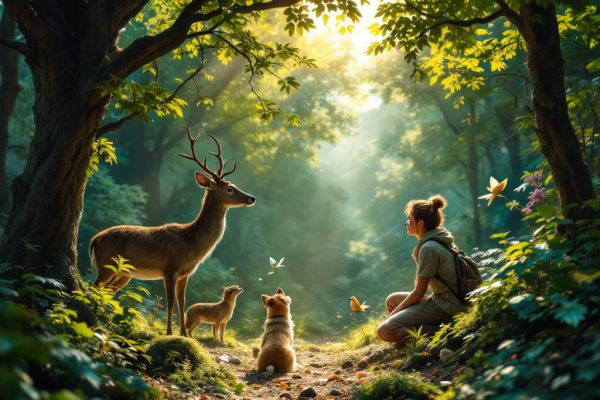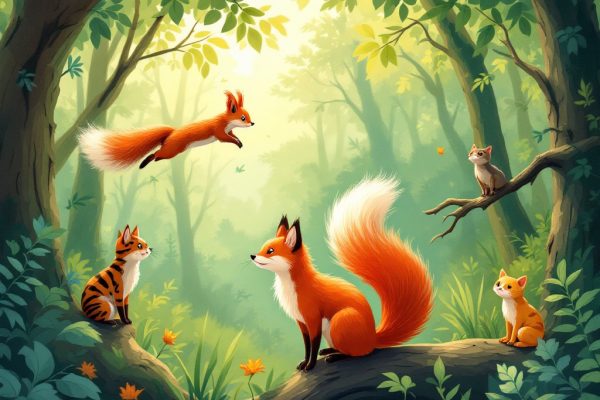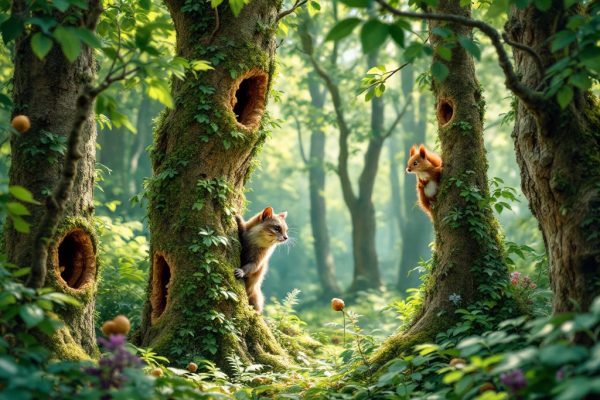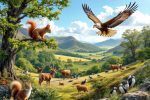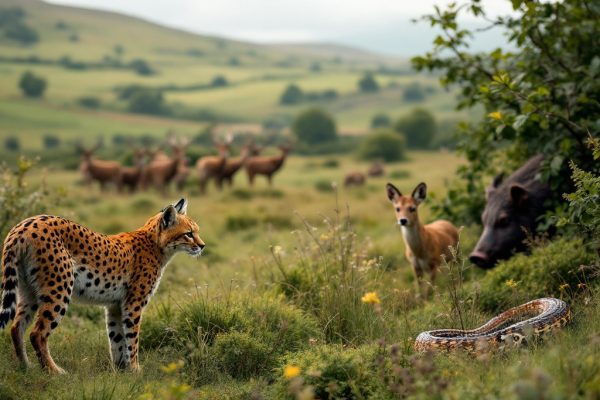How to Explore the Native Fauna of Lothian as a Traveler: Best Tips
Discover East Lothian’s breathtaking wildlife! From the world’s largest Northern gannet colony on Bass Rock to the vibrant birdlife at Levenhall Links, an unforgettable adventure awaits. Learn essential tips for responsible wildlife watching, including respecting animal habitats and using binoculars for optimal viewing. Plan your trip now and explore the diverse ecosystems of the Firth of Forth and beyond!
Important information
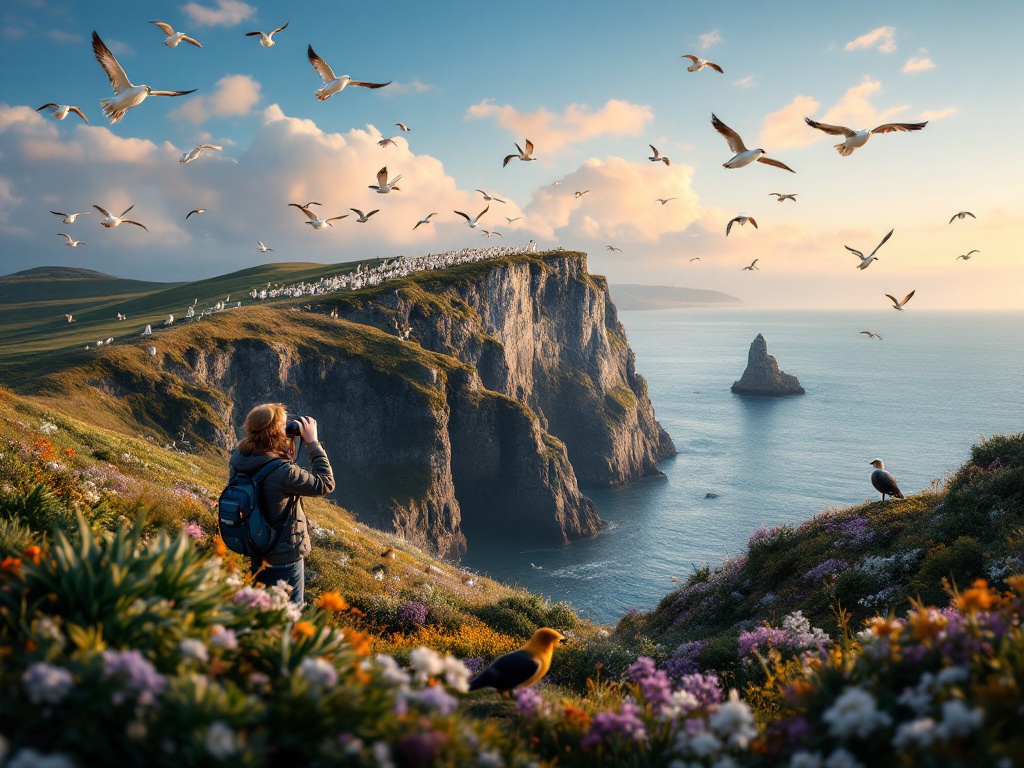
- East Lothian offers diverse wildlife viewing year-round, from seabirds in summer to migrating geese in autumn and wintering ducks.
- Key viewing spots include Levenhall Links for birds, the Firth of Forth for marine life, and Bass Rock for gannets (best viewed between late January and October).
- Respect wildlife by keeping a safe distance, avoiding interaction, and minimizing noise.
- Enhance your experience with binoculars, field guides, and local expertise (consider guided tours).
- Support conservation by following local guidelines, choosing responsible tour operators, and considering volunteering or donations.
Introduction to Exploring Native Fauna in Lothian
East Lothian is a haven for wildlife, offering diverse habitats perfect for exploration. Throughout the year, discover a multitude of species amidst its natural wonders.
Travel Tips for Wildlife Encounters in Lothian
Prepare for your Lothian wildlife adventure with these essential steps:
Research peak animal activity periods to maximize your sightings.
Equip yourself with binoculars, field guides, and helpful apps that pinpoint wildlife hotspots and trails.
Arrive early at your chosen viewing location and settle in quietly. Patience is key for successful wildlife viewing.
Maintain a safe distance from the animals and refrain from feeding them. Respecting their natural behavior is crucial for their well-being.
Adhere to local regulations for a responsible and enjoyable experience. Utilize your binoculars for a closer look without disturbing the animals.
Respect the animals and their habitats.
Planning Your Wildlife Tour
Planning Your East Lothian Wildlife Adventure
Research and Plan Your Trip. Research the best times to visit East Lothian to observe specific wildlife, such as migratory birds. Identifying local hotspots beforehand will increase your chances of spotting exciting species.
Consider a Guided Tour. Local experts can offer invaluable insights into the area’s natural wonders and enhance your wildlife viewing experience.
Utilize Wildlife Resources. Consult resources provided by wildlife organizations for tips on locating specific species and respecting the local environment.
Respect Wildlife. Maintain a safe distance from animals and adhere to local guidelines to ensure both your safety and the well-being of the wildlife.
Pack Appropriately. Bring binoculars for enhanced viewing and wear neutral-colored clothing to blend in with the surroundings. Minimize noise to avoid disturbing the animals.
Enlisting the Help of Wildlife-Safe Operators
Choosing a wildlife-safe operator enhances your trip and contributes to conservation. These operators prioritize sustainable encounters that respect animals and their environments. Knowledgeable about local species and habitats, they champion responsible tourism. This approach minimizes environmental disruption and protects wildlife.
Seasonal Wildlife Experiences in East Lothian
East Lothian offers fantastic wildlife viewing opportunities throughout the year. In autumn, witness the breathtaking arrival of pink-footed geese from Iceland. Spring and autumn are ideal for observing migrations, while winter showcases wintering ducks and waders. Summer teems with diverse seabirds. Explore East Lothian’s natural wonders in any season to discover its rich fauna.
Top Wildlife Spots in East Lothian
East Lothian is a true wildlife wonderland, offering diverse habitats teeming with incredible creatures. Explore Levenhall Links, a birdwatcher’s paradise with unique lagoons hosting a variety of species. Discover the Firth of Forth, whose rich waters support a thriving marine ecosystem. Witness the breathtaking spectacle of Bass Rock, home to the world’s largest Northern gannet colony.
Levenhall Links: A Birdwatcher’s Paradise
Levenhall Links, near Edinburgh, is a birdwatcher’s paradise. Its lagoons attract diverse species, including winter visitors from the Baltic region. From November to February, the calm waters of the inner Forth host long-tailed ducks, eiders, scoters, goldeneyes, mergansers, and goosanders. Levenhall Links also supports local birdlife year-round. Nearby beaches and parks expand viewing opportunities, adding wading birds and other coastal species to the mix. Excellent birdwatching is available throughout the year.
Firth of Forth: Diverse Habitats for Wildlife
Scotland’s Firth of Forth offers a diverse range of habitats, from mudflats and salt marshes to rocky shores and islands. This rich ecosystem supports a thriving community of seabirds, marine mammals, and coastal invertebrates, providing them with both shelter and feeding grounds. It’s a vital haven for wildlife.
Bass Rock: Home to the Largest Gannet Colony
Trips to Bass Rock offer incredible views of the world’s largest Northern gannet colony. Visitors can get remarkably close to these fascinating birds by boat.
The prime viewing time is during nesting season, between late January and October. Over 150,000 gannets gather during this period, creating a truly memorable spectacle.
Key Species to Look Out For
Discover East Lothian’s shallows, home to grey seals. Butterflies flutter through the dunes and grasses. Look out for the unique shore crabs inhabiting the area.
Pink-footed Geese: Autumn Migrants
Every autumn, pink-footed geese migrate from Iceland to East Lothian, Scotland, creating breathtaking displays, particularly in October at Aberlady Bay. Their characteristic pink bills and feet make these birds readily identifiable.
Grey Seals: Observing in Shallow Waters
Grey seals thrive along East Lothian’s shallow coastline. These fascinating animals can also be observed near the Isle of Mull and the Treshnish Islands. Boat tours around these islands offer exceptional opportunities to see the seals in their natural environment.
Butterflies in Dune Grasslands
East Lothian’s dune grasslands are teeming with life, especially from June through August. Comma butterflies and burnet moths flutter among the grasses, playing a vital role in the area’s vibrant ecosystem.
Shore Crabs: Identifying Features
The shore crab’s unique shell, edged with five points on each side, easily distinguishes it from other crab species.
Outdoor Activities for Wildlife Exploration
Discover incredible wildlife in East Lothian! Hike the coastal John Muir Way, spotting seabirds and marine mammals as you go. Keen birdwatchers will love Levenhall Links and Aberlady Bay Local Nature Reserve, home to a diverse range of avian species. For a closer encounter with marine life, boat tours on the Firth of Forth offer glimpses of seals, puffins, and gannets. Explore the unique dune grasslands and rocky shores, teeming with butterflies, shore crabs, and other invertebrates. With activities suited to all interests and abilities, East Lothian promises an immersive wildlife experience.
Birdwatching and Photography Tips
Birdwatching and photography in East Lothian thrive on patience. Quiet observation increases your chances of spotting birds. Enhance your viewing experience with binoculars. Respect the wildlife and their habitat by observing natural behaviors without interfering.
Improve Your Photography
- Join an online community for feedback and new techniques.
- Explore photo editing software to enhance image quality.
Respect Wildlife
Observe natural behaviors without interfering.
Responsible Wildlife Watching and Conservation
Respectful wildlife watching in East Lothian means observing animals from a safe distance without disturbing them. Minimizing our impact ensures their well-being and preserves their vital ecosystems. Travelers can contribute to conservation by following these guidelines:
- Avoid direct interaction with the animals.
- Support local organizations through volunteering or donations.
- Follow recommended guidelines for wildlife viewing.
This helps protect Lothian’s diverse wildlife and safeguards the region’s natural beauty, enriching your trip in the process.
Best Practices for Responsible Tourism
Minimize your environmental impact by traveling responsibly. Here’s how:
Bring a reusable water bottle and pack snacks in reusable containers to reduce waste.
Stay on marked trails to protect delicate ecosystems.
Support local communities and businesses. Choose sustainable accommodations, tour operators, and restaurants to boost the local economy.
Respect wildlife. Observe animals from afar and refrain from feeding or interacting with them. Familiarize yourself with and adhere to local wildlife viewing guidelines.
Contribute to conservation efforts. Participate in citizen science projects like beach cleanups or wildlife surveys.
Enrich your travel experience. Learn about the local environment, history, ecology, and culture. This fosters a deeper appreciation for your destination.
Wildlife Safe (WiSe) Scheme and Marine Conservation
The Wildlife Safe (WiSe) scheme champions responsible marine wildlife interactions by educating people about marine ecosystems and encouraging respect for local creatures. WiSe promotes sustainable observation, such as maintaining safe distances and minimizing disturbances to natural behaviors. Accreditation demonstrates an operator’s dedication to responsible wildlife tourism, protecting Scotland’s diverse marine life. This benefits both the animals and the long-term health of the marine environment. The scheme also aligns with the Scottish Marine Wildlife Watching Code, ensuring adherence to best practices.
Understanding Scottish Marine Wildlife Watching Code
The Scottish Marine Wildlife Watching Code promotes responsible wildlife viewing with simple guidelines to minimize disturbance. Maintaining a safe distance and respecting natural behaviors helps protect seals, dolphins, and whales. By following the code, you contribute to preserving Scotland’s marine life.


